It’s often said that the hardest life situations can lead to some of the most creative works of art. The idea seems to have rung true for Tom Gauntt. After being dealt a difficult hand when diagnosed with an illness that restricted his physical activity, Tom decided to focus on smaller projects and tried out turning a pen on a lathe. Though his first iteration was less than perfect, he kept at it. Once he refined his technique, he started incorporating driftwood found along the nearby Chesapeake Bay and discovered that it made for truly special writing utensils.
We’re so excited to have Tom’s one-of-a-kind driftwood pens as new additions to our assortment. Settle in and read on to hear directly from Tom about the in-depth craftsmanship that goes into each one.
When did you know you were an artist? Have you always been a maker of some kind?
Growing up in a creative and “make it yourself” family, I guess I just assumed that we are all artists in some way or another. Some of us are musicians, some of us are carpenters, some are painters or gardeners and some of us are artists in the kitchen. It just takes a little time to figure out where that artistic trait lies. My preferred medium for visual artistic expression is painting watercolors and I get this from my mother. The “maker” gene is strong on my father’s side of the family. When I was ten years old, I was absolutely convinced that my father and grandfather could build or fix anything – I often stood in awe watching as they repaired a boat motor, installed a new pressure switch on a well pump, or finished the glue-up on a wooden table.
Several years ago, an illness forced me to choose less physically demanding activities than my usual adventures in sailboat restoration and bicycling. My daughter, who truly is an artist, and I were talking one day and we decided we’d try to turn a pen on a lathe. The first one was anything but perfect, but I was hooked. That first experiment in turning led to dozens and now hundreds of turned objects. This outlet was certainly providing a way to make useful things, but it wasn’t until I started turning driftwood that I was best able to combine my love of making things with more of an artist’s eye towards creating unique writing instruments. Lately I’ve become very passionate about mixing driftwood and a hand-tinted sea glass-inspired resin together. This unique combination allows me to fully express my “making things” desire with my watercolor artist’s eye of mixing and tinting the endlessly changing resin color palette.
Talk to us about the materials you use. Why do you choose to work with driftwood?
I turn all sorts of materials, but my favorite to turn is driftwood. There are so many beautiful woods commercially available like zebrawood and maple burl and spalted tamarind. These woods turn beautiful objects for sure, but I find it remarkably fulfilling to take a long walk on a quiet beach and find a large piece of driftwood to take back to the studio to see if it can be used. The idea of using a resource that hasn’t been harvested, but rather simply received from nature, is quite appealing to me. I also like the fact that few artists, if any, are turning driftwood. Working with driftwood presents many challenges that you don’t find working with other materials and I like that as well – maybe that’s why people aren’t using it.
Although I’m not off the grid, I try to be as environmentally conscious as possible. I even dry the driftwood in a solar kiln built just for the purpose. I love the water and have been fortunate to live on or near beautiful beaches in Alabama, Florida, Alaska, and here in Maryland. Creating a useful and beautiful item with driftwood evokes a long walk on the beach, a stunning sunrise, or celebrating the gift of another day as the sun sets over the water.
What is a typical day in the studio like for you?
I don’t think I’ve ever had a typical day in the studio! Some mornings I have a new idea I want to try and I get going before the sun comes up pushing other projects aside. Some evenings I want to finish up a piece that I’m working on and stay up late to complete it. Once out in the studio, I always have several projects going at once. Because my process and techniques for using driftwood run on very different timelines, I will have some driftwood drying in the solar kiln, some driftwood air drying, some being stabilized in a vacuum chamber, designing commissioned pieces using who-knows-what, and then turning, finishing and building pens and other things.
All these very different timelines means it’s not possible to follow one piece from start to finish. For some people, this process would be maddening, but I love the constant variation in the creative and building process. I guess I go with the flow – “reeds in the wind” as they say. I so envy those artists and makers who can keep to a schedule and still create amazing works. My approach is a little more organic I suppose. Some people might call it “organized chaos.”
Can you walk us through how one of your pens are made, step-by-step?
Sure, but it’s a lot of steps! The pens I typically create consist of the wooden body and mechanical insides. The wooden body is the part that is turned on the lathe and that’s where I start my process. I am fortunate to live on an island in the Chesapeake Bay and have easy access to miles of beach. A few times a month I’ll walk a section beach looking for likely driftwood candidates to take back to the studio. Initially, I let the wood dry for a few months outside. Once the wood is fairly dry, I’ll take it to the bandsaw and mill it down to several pieces. About half the time, the driftwood piece isn’t a good choice for turning – it’s either too weak structurally or not visually interesting. Once a suitable piece is found, I’ll cut the wood into smaller, more usable pieces called “blanks.” The blanks are typically one inch square by five inch long pieces. Once milled down to blanks, I’ll put them in the solar kiln to dry for a few more weeks to several months. Driftwood gets its character from exposure to the elements and the natural decaying process. This decaying process introduces voids and beautiful spalting – the black veins that run through the wood.
Because the cellular structure of the wood isn’t as strong as it was, it needs to be strengthened or stabilized. To stabilize the wood, I submerge the blanks in a liquid resin. The blanks and resin bath are then placed in a vacuum chamber for 24-hours. All the air in the open wood cells is removed and resin fills the tiny spaces left behind. After all the resin has soaked in, the blanks are then heated very precisely to cure the resin. The result is an incredibly hard wooden blank with all the beauty of the natural driftwood. On blanks that have large voids, I fill those with a hand-tinted acrylic that is inspired by sea glass or amber.
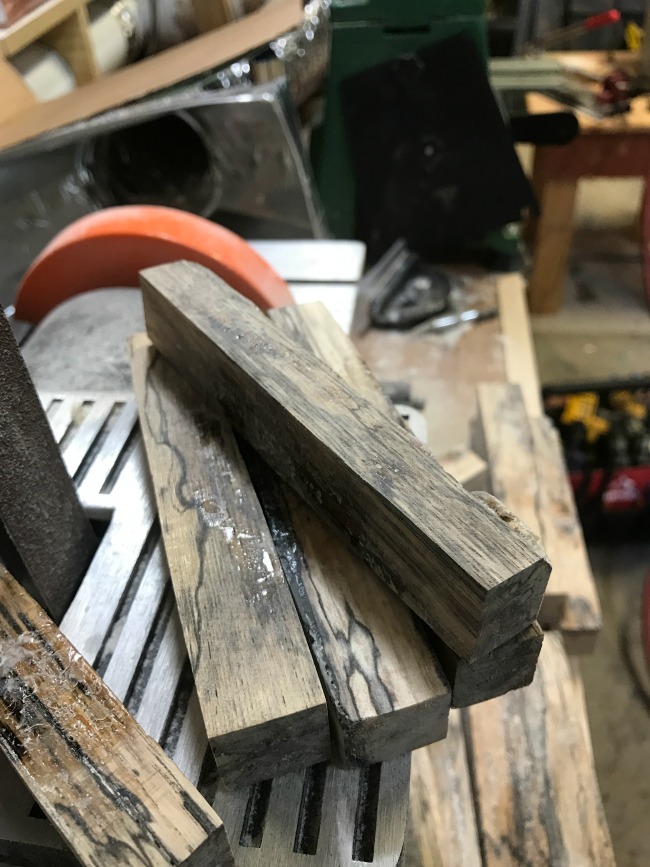
The backbone of the pen is a strong brass tube. Once the blank is ready, a hole is drilled very precisely down the center of the blank using special tools. The brass tube is then glued to the inside of the wood blank with an epoxy adhesive. Finally, the wood blank is now ready to be turned on the lathe. Once turned, the wood goes through six stages of hand sanding. After the wood is sanded smooth, a finish is applied. Depending on the desired look, I use either a hand-rubbed shellac or an acrylic finish. The acrylic finish requires a dozen individual coats before wet sanding through to an incredibly fine 12,000 grit abrasive.
The final step in completing the wood surface is hand-buffing on three high-speed buffing wheels through progressively finer abrasives. The result is a stunningly glossy wooden pen body. With the wood turned and finished, the pen is ready for assembly. Using extraordinarily tight tolerances in the thousandths of an inch range, the pen mechanics are fitted into place using a mechanical press. From the day a piece of driftwood is picked up on the beach to the day it becomes a finished pen is typically six to eight months.
Is there a trinket, talisman, or other important object you keep nearby as you work?
Not in the typical sense of a rabbit’s foot or four-leaf clover or a statue of Buddha or anything like that. I think it’s pretty cool when people do keep talismans or charms – my grandfather, who fought as a Marine in the Pacific in WWII, kept a v-shaped piece of coral as a talisman. I guess I’m more of a, as Hemingway said, “make your own luck” person. What I surround myself with in the studio are quality tools. My wife has given me several hand planes from Thomas Lie-Nielsen that I treasure. My favorite is a Number 4 smoothing plane that is the most beautiful hand tool I could ever hope to own. It has a prominent display shelf in the shop and is my constant reminder of craftsmanship of the highest order.
How do you hope people react when they receive one of your pens?
I particularly enjoy watching the recipient’s eyes widen and jaw drop open. At that point I know the pen has truly resonated with that person – a moment in time has been captured. I get a real kick out of being a small part of creating a memory. In one sense, a pen is simply a tool used to communicate. The pen on the chain at the bank writes like most any other pen, but it doesn’t have much of a story to tell. What I hope for when someone receives one of my pens is that it’s part of a bigger story, like recognizing a job promotion or celebrating a birthday. Maybe it’s a beautiful reminder of a kiss, an embrace, a life spent together or the promise of the same. Or maybe it’s simply a way to say “I love you.”
Do you have any quotes or mantras that keep you motivated?
My family and friends will tell you I have more quotes and colloquialisms than anyone they know – a quirky gift I suppose. Mark Twain is my favorite source of quotes and I love this one as it applies to a lot of work I do in the shop: “If it’s your job to eat a frog, it’s best to do it first thing in the morning. If it’s your job to eat two frogs, it’s best to eat the biggest one first.” My other favorite, this one from Emerson is, “Nothing great was ever achieved without enthusiasm.” I have a hundred others, but I’ll stop there.

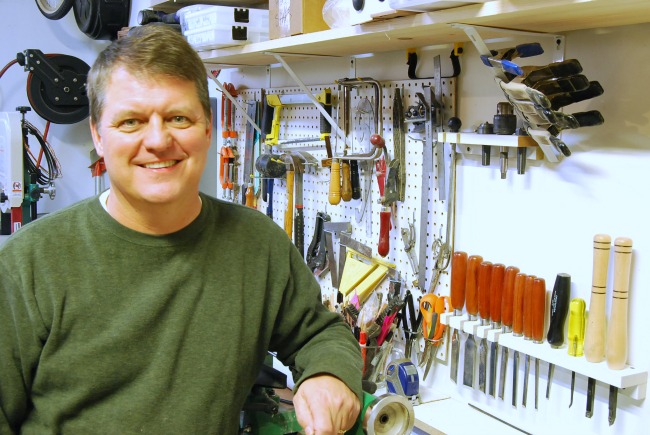
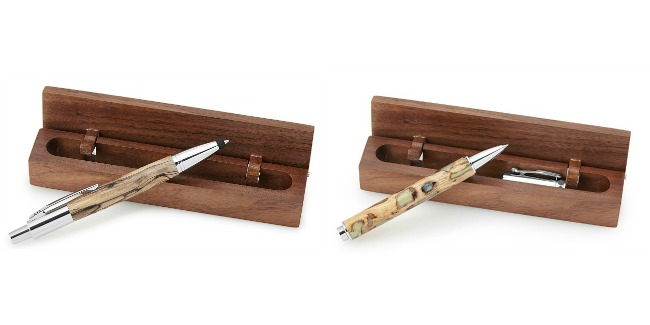
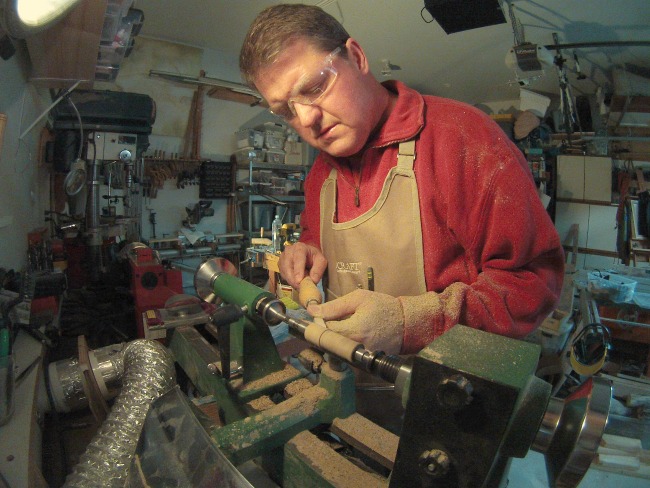
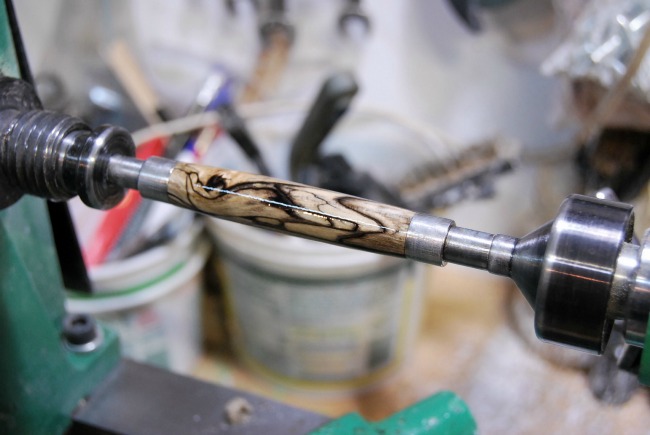
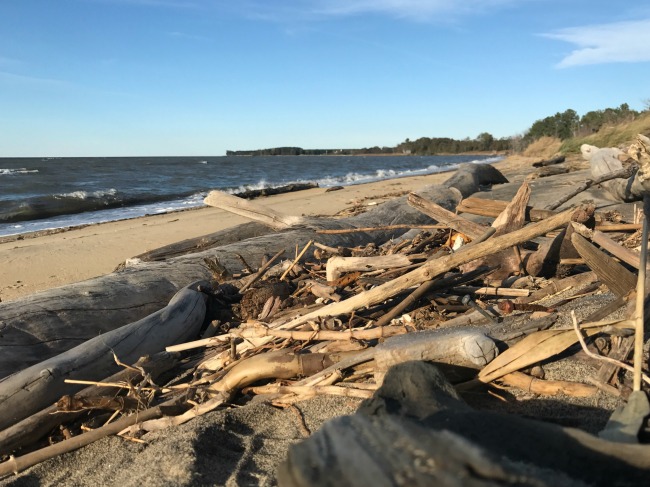
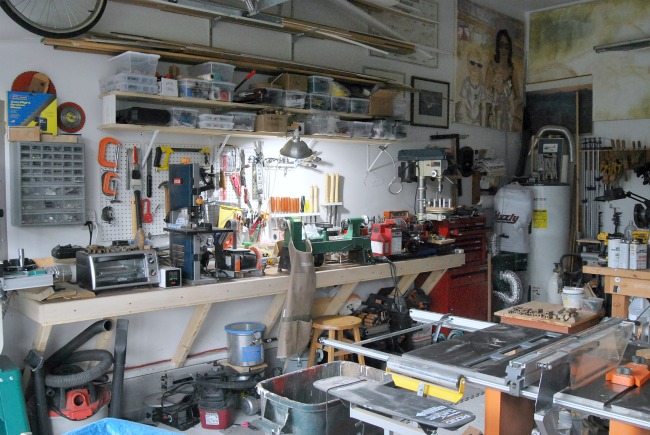
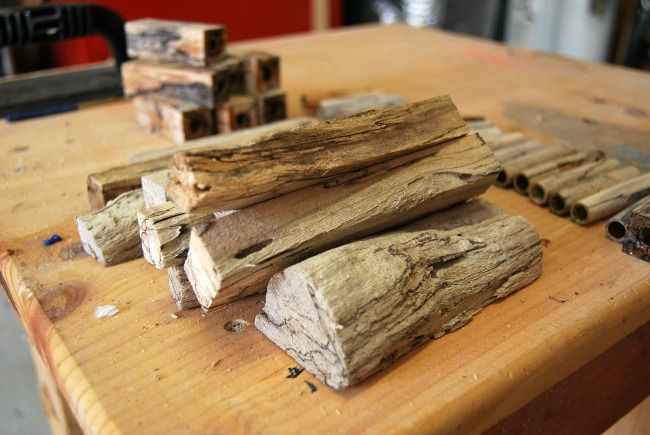
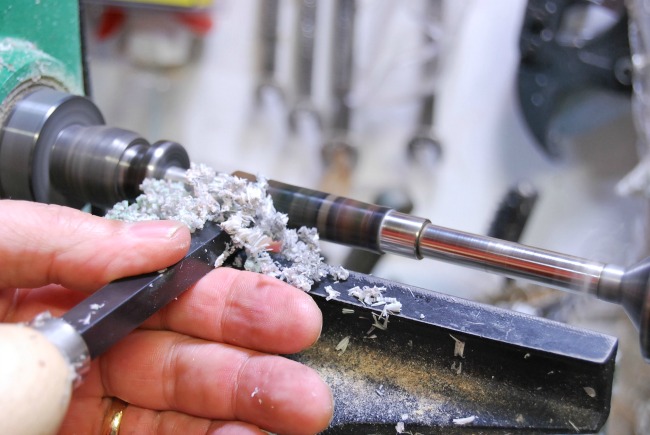
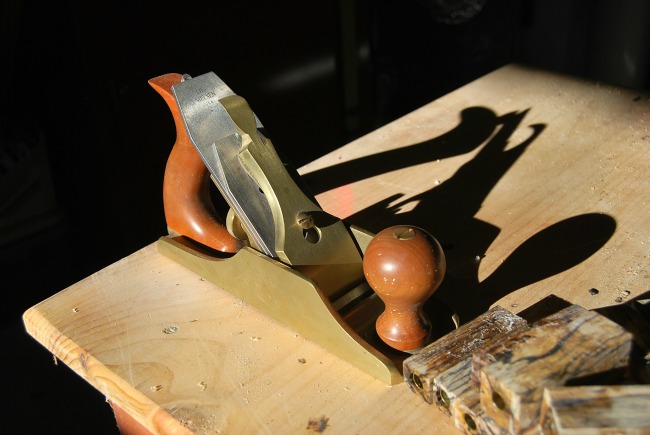

No Comments